
 (732) 246-1377
(732) 246-1377
 (732) 246-1377
(732) 246-1377
Diabetic foot complications can be debilitating, but choosing the appropriate footwear can help to manage the symptoms. Diabetic shoes are specially designed with extra depth and a roomy toe box to accommodate custom orthotics or insoles. These shoes are typically made from soft, breathable materials to minimize friction and pressure points, as well as reduce the risk of blisters, calluses, and ulcers. Diabetic shoes often feature seamless interiors and come with supportive arches and cushioned insoles for added comfort. Custom orthotics, prescribed by a podiatrist, are designed to provide personalized support for your unique foot structure and gait. These can be placed inside your regular shoes or diabetic shoes, offering stability, shock absorption, and pressure relief where needed. Extra-wide shoes are a good choice, as they offer ample room for the feet without causing pressure or constriction. Shoes with adjustable closures, such as Velcro straps or laces, can provide a secure fit without excessive tightness. Many people choose to wear diabetic socks, which are generally made from moisture-wicking materials to keep your feet dry and comfortable. They typically have seamless construction to minimize friction and reduce the risk of blisters and ulcers. If you have foot conditions caused by diabetes, it is suggested that you are under the care of a podiatrist who can monitor and manage any problems that may occur.
Diabetic foot care is important in preventing foot ailments such as ulcers. If you are suffering from diabetes or have any other concerns about your feet, contact one of our podiatrists from Livingston Footcare. Our doctors can provide the care you need to keep you pain-free and on your feet.
Diabetic Foot Care
Diabetes affects millions of people every year. The condition can damage blood vessels in many parts of the body, especially the feet. Because of this, taking care of your feet is essential if you have diabetes, and having a podiatrist help monitor your foot health is highly recommended.
The Importance of Caring for Your Feet
Patients with diabetes should have their doctor monitor their blood levels, as blood sugar levels play such a huge role in diabetic care. Monitoring these levels on a regular basis is highly advised.
It is always best to inform your healthcare professional of any concerns you may have regarding your feet, especially for diabetic patients. Early treatment and routine foot examinations are keys to maintaining proper health, especially because severe complications can arise if proper treatment is not applied.
If you have any questions please feel free to contact our office located in North Brunswick, NJ . We offer the newest diagnostic and treatment technologies for all your foot and ankle needs.

Studies show that ankle sprains are the most common injury experienced among runners. Additionally, if you have experienced an ankle sprain in the past, you are 75 percent more likely to develop chronic ankle instability. As a result, choosing the right running shoe is of paramount importance to avoid these outcomes. First, opt for shoes with a high-top design or added ankle padding. These features can help stabilize the ankle joint and reduce the risk of sprains and strains during your runs. Additionally, a snug and secure fit around the ankle area, particularly at the heel, is essential. Look for shoes with padded collars and lacing systems that allow you to adjust the tightness to your comfort level. Cushioning is another key factor in finding shoes with adequate ankle support. Shoes with ample cushioning in the heel and midsole provide shock absorption, which helps minimize the impact on the ankles. Further, choose running shoes with a durable outsole that offers excellent traction, ensuring a stable and confident stride. Finally, take into account the type of terrain you typically run on when deciding on the right shoes. For more information on protecting your ankles while running, it is suggested that you make an appointment with a podiatrist.
If you are a runner, wearing the right running shoe is essential. For more information, contact one of our podiatrists from Livingston Footcare. Our doctors can provide the care you need to keep you pain-free and on your feet.
Choosing the Right Running Shoe for Your Foot Type
To increase performance and avoid the risk of injury, it is important to choose the right running shoe based on your foot type. The general design of running shoes revolves around pronation, which is how the ankle rolls from outside to inside when the foot strikes the ground.
If you have any questions please feel free to contact our office located in North Brunswick, NJ . We offer the newest diagnostic and treatment technologies for all your foot and ankle needs.

Orthotic shoe devices are inserts made of various materials consisting of rubber, leather, or plastic that are placed inside shoes. They serve to stabilize the foot in a neutral position and provide cushioning to reduce impact. Custom-made orthotics can be beneficial for individuals with unique foot shapes or excessive pronation, which is an inward rolling of the foot. Investing in well-constructed athletic shoes with good arch support and heel cushioning, along with softer arch supports and heel cups, can also help to alleviate foot discomfort and absorb shock. If you suffer from foot pain and would like to see if orthotics may help you, it is suggested that you make an appointment with a podiatrist for a consultation.
If you are having discomfort in your feet and would like to try orthotics, contact one of our podiatrists from Livingston Footcare. Our doctors can provide the care you need to keep you pain-free and on your feet.
What Are Orthotics?
Orthotics are inserts you can place into your shoes to help with a variety of foot problems such as flat feet or foot pain. Orthotics provide relief and comfort for minor foot and heel pain but can’t correct serious biomechanical problems in your feet.
Over-the-Counter Inserts
Orthotics come in a wide variety of over-the-counter inserts that are used to treat foot pain, heel pain, and minor problems. For example, arch supports can be inserted into your shoes to help correct overarched or flat feet, while gel insoles are often used because they provide comfort and relief from foot and heel pain by alleviating pressure.
Prescription Orthotics
If over-the-counter inserts don’t work for you or if you have a more severe foot concern, it is possible to have your podiatrist prescribe custom orthotics. These high-quality inserts are designed to treat problems such as abnormal motion, plantar fasciitis, and severe forms of heel pain. They can even be used to help patients suffering from diabetes by treating foot ulcers and painful calluses and are usually molded to your feet individually, which allows them to provide full support and comfort.
If you are experiencing minor to severe foot or heel pain, it’s recommended to speak with your podiatrist about the possibilities of using orthotics. A podiatrist can determine which type of orthotic is right for you and allow you to take the first steps towards being pain-free.
If you have any questions please contact our office located in North Brunswick, NJ . We offer the newest diagnostic and treatment technologies for all your foot and ankle needs.

Foot pain can be prevalent among older individuals, impacting approximately one in four seniors. It poses a significant threat to mobility and balance and is an independent contributor to the risk of falls. The management of foot pain is often overlooked in geriatric healthcare, resulting in unnecessary suffering and disability among older adults. Fortunately, conservative interventions such as routine foot care, proper footwear guidance, and the use of foot orthoses have proven effective in reducing foot pain and preserving mobility in older individuals. These interventions play a crucial role in ensuring the well-being and independence of older adults who may otherwise endure chronic foot pain unnecessarily. If you are a senior or caring for one, it is suggested that you make an appointment with a podiatrist for an examination and advice on how to best protect aging feet.
Foot Pain
Foot pain can be extremely painful and debilitating. If you have a foot pain, consult with one of our podiatrists from Livingston Footcare. Our doctors will assess your condition and provide you with quality foot and ankle treatment.
Causes
Foot pain is a very broad condition that could be caused by one or more ailments. The most common include:
Diagnosis
To figure out the cause of foot pain, podiatrists utilize several different methods. This can range from simple visual inspections and sensation tests to X-rays and MRI scans. Prior medical history, family medical history, and any recent physical traumatic events will all be taken into consideration for a proper diagnosis.
Treatment
Treatment depends upon the cause of the foot pain. Whether it is resting, staying off the foot, or having surgery; podiatrists have a number of treatment options available for foot pain.
If you have any questions, please feel free to contact our office located in North Brunswick, NJ . We offer the newest diagnostic and treatment technologies for all your foot care needs.
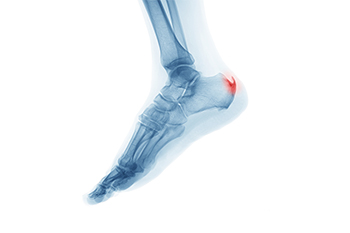
Heel spurs, though commonly misunderstood, are a prevalent foot condition that affects many individuals. These bony growths form on the underside of the heel bone and often coexist with another foot issue, such as plantar fasciitis. Contrary to popular belief, heel spurs themselves may not always be the primary source of pain. Instead, it is the inflammation and irritation of the surrounding tissues that typically cause discomfort. Heel spurs often develop due to excessive strain and stress on the heel, which can result from factors such as obesity, wearing improper footwear, or repetitive activities. While they can be detected through X-rays, treatment usually targets the underlying condition. Conservative approaches consisting of rest and wearing orthotic inserts, may help to alleviate symptoms. In rare cases, surgery may be considered when conservative methods prove ineffective. Understanding the facts about heel spurs can help individuals make informed decisions about their foot health and seek appropriate treatment when needed. If you have heel pain, and suspect it may be a heel spur, it is suggested that you visit a podiatrist who can accurately diagnose and treat the problem.
Heel spurs can be incredibly painful and sometimes may make you unable to participate in physical activities. To get medical care for your heel spurs, contact one of our podiatrists from Livingston Footcare. Our doctors will do everything possible to treat your condition.
Heels Spurs
Heel spurs are formed by calcium deposits on the back of the foot where the heel is. This can also be caused by small fragments of bone breaking off one section of the foot, attaching onto the back of the foot. Heel spurs can also be bone growth on the back of the foot and may grow in the direction of the arch of the foot.
Older individuals usually suffer from heel spurs and pain sometimes intensifies with age. One of the main condition's spurs are related to is plantar fasciitis.
Pain
The pain associated with spurs is often because of weight placed on the feet. When someone is walking, their entire weight is concentrated on the feet. Bone spurs then have the tendency to affect other bones and tissues around the foot. As the pain continues, the feet will become tender and sensitive over time.
Treatments
There are many ways to treat heel spurs. If one is suffering from heel spurs in conjunction with pain, there are several methods for healing. Medication, surgery, and herbal care are some options.
If you have any questions feel free to contact our office located in North Brunswick, NJ . We offer the latest in diagnostic and treatment technology to meet your needs.

Ankle injuries, particularly sprains, can be debilitating, causing pain and making it difficult to move. After a sprain, some patients may notice a cracking or popping sensation. Ankle cracking often affects those who have experienced multiple ankle sprains because repeated injuries can lead to instability in the joint. Over time, the ligaments that support the ankle become worn down, stretched, and weakened. As a result, they can no longer hold the bones securely in place. When the bones move back into their natural positions, a cracking or popping sound results. Attempting to self-diagnose or treat the issue can lead to further and far more serious complications. Tests such as X-rays can offer a more detailed view of the condition, and the treatment for ankle cracking will depend on the severity of the injury. In many cases, nonsurgical approaches can effectively manage the condition. In extreme cases, surgery may be a necessity. If you experience ankle cracking after a sprain, it's suggested that you make an appointment with a podiatrist for a full exam, diagnosis, and treatment plan.
Ankle sprains are common but need immediate attention. If you need your feet checked, contact one of our podiatrists from Livingston Footcare. Our doctors can provide the care you need to keep you pain-free and on your feet.
How Does an Ankle Sprain Occur?
Ankle sprains take place when the ligaments in your ankle are torn or stretched beyond their limits. There are multiple ways that the ankle can become injured, including twisting or rolling over onto your ankle, putting undue stress on it, or causing trauma to the ankle itself.
What Are the Symptoms?
Preventing a Sprain
Treatment of a Sprain
Treatment of a sprain depends on the severity. Many times, people are told to rest and remain off their feet completely, while others are given an air cast. If the sprain is very severe, surgery may be required.
If you have suffered an ankle sprain previously, you may want to consider additional support such as a brace and regular exercises to strengthen the ankle.
If you have any questions please feel free to contact our office located in North Brunswick, NJ . We offer the newest diagnostic and treatment technologies for all your foot and ankle needs.
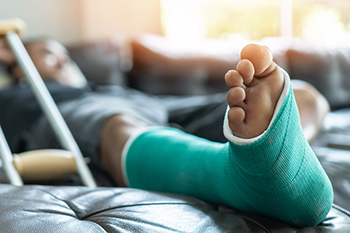
Lisfranc injuries, though rare, can have debilitating consequences if not properly managed. These acute and traumatic injuries affect the tarsometatarsal joints in the midfoot, ranging from mild sprains to severe dislocation fractures. These joints help to transfer force between the rearfoot and forefoot during walking. Recognizing Lisfranc injuries involves noting diffuse pain, swelling, and inability to bear weight around the midfoot. The pain peaks when the midfoot becomes a rigid lever for weight transfer. Dismissing these injuries as mere bruising can lead to complications like post-traumatic arthritis and chronic pain. Staying off the foot, stability, and strengthening can lead to recovery. Exercises and orthotics can also help. Treatment may include wearing a special boot and controlled weight bearing. Lisfranc injuries are complex but manageable. To regain proper mobility and prevent long-term complications from Lisfranc injuries in the foot, it is suggested that you visit a podiatrist for a diagnosis and treatment plan.
A broken foot requires immediate medical attention and treatment. If you need your feet checked, contact one of our podiatrists from Livingston Footcare. Our doctors can provide the care you need to keep you pain-free and on your feet.
Broken Foot Causes, Symptoms, and Treatment
A broken foot is caused by one of the bones in the foot typically breaking when bended, crushed, or stretched beyond its natural capabilities. Usually the location of the fracture indicates how the break occurred, whether it was through an object, fall, or any other type of injury.
Common Symptoms of Broken Feet:
Those that suspect they have a broken foot shoot seek urgent medical attention where a medical professional could diagnose the severity.
Treatment for broken bones varies depending on the cause, severity and location. Some will require the use of splints, casts or crutches while others could even involve surgery to repair the broken bones. Personal care includes the use of ice and keeping the foot stabilized and elevated.
If you have any questions please feel free to contact our office located in North Brunswick, NJ . We offer the newest diagnostic and treatment technologies for all your foot and ankle needs.
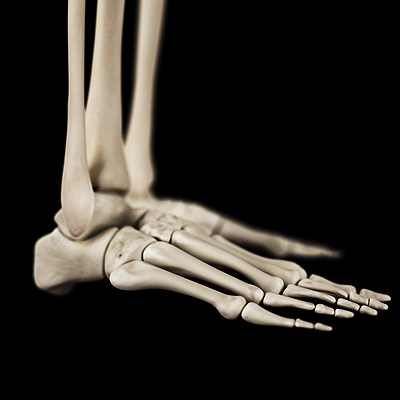
Beneath the skin's surface lies a fascinating framework of foot bones, intricately designed to support our weight and enable movement. Comprising 26 bones, the foot forms three arches that are crucial for balance and shock absorption. However, this intricate structure is vulnerable to various conditions. Fractures can occur due to accidents or stress, while arthritis, an inflammation of joints, can erode bone surfaces. Bunions, caused by misalignment of bones, lead to a bony bump at the base of the big toe. Plantar fasciitis, arising from excessive strain, can cause heel pain. Understanding these conditions empowers us to prioritize foot health. Wearing proper footwear, managing weight, and engaging in a regular exercise routine are vital in preventing foot conditions. If you would like to learn about foot biomechanics, it is suggested that you speak with a podiatrist who can provide you with useful information.
If you have any concerns about your feet, contact one of our podiatrists from Livingston Footcare. Our doctors can provide the care you need to keep you pain-free and on your feet.
Biomechanics in Podiatry
Podiatric biomechanics is a particular sector of specialty podiatry with licensed practitioners who are trained to diagnose and treat conditions affecting the foot, ankle and lower leg. Biomechanics deals with the forces that act against the body, causing an interference with the biological structures. It focuses on the movement of the ankle, the foot and the forces that interact with them.
A History of Biomechanics
Modern technological improvements are based on past theories and therapeutic processes that provide a better understanding of podiatric concepts for biomechanics. Computers can provide accurate information about the forces and patterns of the feet and lower legs.
Understanding biomechanics of the feet can help improve and eliminate pain, stopping further stress to the foot.
If you have any questions please feel free to contact our office located in North Brunswick, NJ . We offer the newest diagnostic and treatment technologies for all your foot and ankle needs.
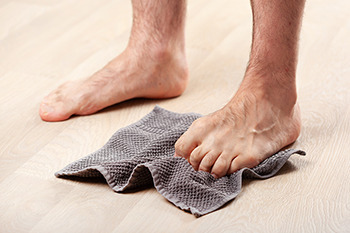
In the realm of overall well-being, foot health plays a pivotal role, and is often overlooked. Foot exercises, a powerful yet underappreciated tool, hold the potential to enhance both physical comfort and agility. These exercises come in various forms, from simple toe curls and arch stretches to more dynamic movements such as calf raises and ankle circles. Performing foot exercises can improve blood circulation, strengthen muscles, and enhance flexibility. This is successful in contributing to better balance and posture. The importance of foot exercises extends beyond the feet themselves, as they can alleviate strain on knees, hips, and lower back. It is beneficial to Incorporate foot exercises into a regular fitness regimen, which translates into a natural approach to health. If you would like to learn about additional foot exercises, it is suggested that you consult with a podiatrist who can provide you with useful tips.
Exercising your feet regularly with the proper foot wear is a great way to prevent injuries and build strength. If you have any concerns about your feet, contact one of our podiatrists from Livingston Footcare. Our doctors can provide the care you need to keep you pain-free and on your feet.
Exercise for Your Feet
Exercise for your feet can help you gain strength, mobility and flexibility in your feet. They say that strengthening your feet can be just as rewarding as strengthening another part of the body. Your feet are very important, and we often forget about them in our daily tasks. But it is because of our feet that are we able to get going and do what we need to. For those of us fortunate enough to not have any foot problems, it is an important gesture to take care of them to ensure good health in the long run.
Some foot health exercises can include ankle pumps, tip-toeing, toe rises, lifting off the floor doing reps and sets, and flexing the toes. It is best to speak with Our doctors to determine an appropriate regimen for your needs. Everyone’s needs and bodies are different, and the activities required to maintain strength in the feet vary from individual to individual.
Once you get into a routine of doing regular exercise, you may notice a difference in your feet and how strong they may become.
If you have any questions please feel free to contact our office located in North Brunswick, NJ . We offer the newest diagnostic and treatment technologies for all your foot and ankle needs.
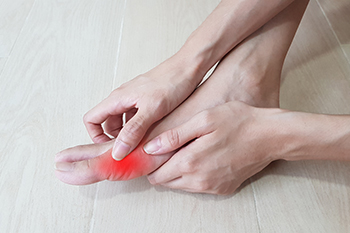
Gout is a type of arthritis that often affects the joints of the big toe, and is caused by the accumulation of uric acid crystals. There are four distinct stages of gout. The first stage, known as asymptomatic hyperuricemia, is characterized by high levels of uric acid in the blood without any noticeable symptoms. The second stage is acute gout that occurs when uric acid forms crystals which begin to deposit in the joints. This can lead to sudden and severe pain, swelling, and redness. If left untreated acute gout can progress to the third stage, known as intercritical gout, or the interval between gout attacks. During this phase, patients can experience periods of remission where symptoms subside, but it is essential to maintain proper management and lifestyle changes to prevent future flare ups. The final stage is chronic tophaceous gout, which occurs after repeated gout attacks. In this stage, large uric acid crystal deposits called tophi, can develop beneath the skin surrounding the joints and in other tissues. Tophi can lead to joint damage and deformities. Early detection and appropriate management are key to preventing the progression of gout. If you believe you have gout, it is suggested that you make an appointment with a podiatrist for treatment options.
Gout is a painful condition that can be treated. If you are seeking treatment, contact one of our podiatrists from Livingston Footcare. Our doctors will treat your foot and ankle needs.
What Is Gout?
Gout is a form of arthritis that is characterized by sudden, severe attacks of pain, redness, and tenderness in the joints. The condition usually affects the joint at the base of the big toe. A gout attack can occur at any random time, such as the middle of the night while you are asleep.
Symptoms
Risk Factors
Prior to visiting your podiatrist to receive treatment for gout, there are a few things you should do beforehand. If you have gout you should write down your symptoms--including when they started and how often you experience them, important medical information you may have, and any questions you may have. Writing down these three things will help your podiatrist in assessing your specific situation so that he or she may provide the best route of treatment for you.
If you have any questions, please feel free to contact our office located in North Brunswick, NJ . We offer the newest diagnostic and treatment technologies for all your foot care needs.

Most experts recommend letting babies go barefoot until they are getting ready to walk. However, finding the right shoes for their first steps can be confusing. The first concern is choosing the right size shoes for your toddler’s feet, and with an increase in age, the shoe size may change frequently. One way to determine the correct size is by inserting the pinky finger between the heel of the shoe and the child’s ankle. It should be snug. Then press the tip of the shoe while the baby is standing. There should be about half an inch of space. Next, choose shoes that are made of lightweight materials and are flexible. Shoes that are easy to put on and take off are desired, along with washability. It is thought that toddlers will need a new pair of shoes every two to three months. Hand-me-down shoes are discouraged as each child has a different foot structure. For additional guidance on choosing walking shoes for your child, it is suggested that you make an appointment with a podiatrist.
Making sure that your children maintain good foot health is very important as they grow. If you have any questions, contact one of our podiatrists of Livingston Footcare. Our doctors can provide the care you need to keep you pain-free and on your feet.
Keeping Children's Feet Healthy
Having healthy feet during childhood can help prevent medical problems later in life, namely in the back and legs. As children grow, their feet require different types of care. Here are some things to consider...
Although babies do not walk yet, it is still very important to take care of their feet.
Avoid putting tight shoes or socks on his or her feet.
Allow the baby to stretch and kick his or her feet to feel comfortable.
As a toddler, kids are now on the move and begin to develop differently. At this age, toddlers are getting a feel for walking, so don’t be alarmed if your toddler is unsteady or ‘walks funny’.
As your child gets older, it is important to teach them how to take care of their feet.
Show them proper hygiene to prevent infections such as fungus.
Be watchful for any pain or injury.
Have all injuries checked by a doctor as soon as possible.
Comfortable, protective shoes should always be worn, especially at play.
If you have any questions please feel free to contact our office located in North Brunswick, NJ . We offer the newest diagnostic and treatment technologies for all your foot and ankle needs.